Sam Nielson
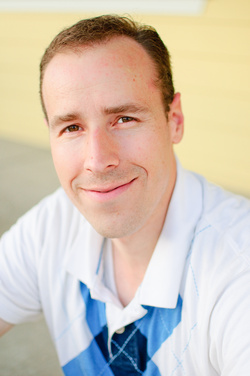
How did you land your job at Avalanche Software/Disney Interactive Studios?
When I was young, my older brother John was obsessed with the idea of making his own video games. He was a much better artist than me, but he had no one to write the code to make the game work, so he taught himself how to program. Because he had to dedicate so much time toward engineering his games, I fell into the backup artist role, picking up whatever scrap pieces he didn’t want to do himself. Back then we drew assets pixel-by-pixel using primitive (and sometimes self-made) software.
When I turned sixteen, my mom, searching for anything she could do with her sons’ computer nerd skills, found a classified ad by a company looking for a computer artist. I was excited to discover that the company made video games, so as a portfolio, I turned in the only game my brother and I had actually finished.
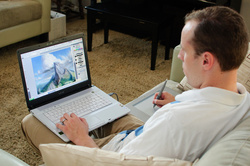
I found out later that they were underwhelmed by my art skills, but they gave me a chance because they were impressed we actually went through the process of making a game by ourselves.
That job (which I started at age sixteen) gave me the confidence I needed and surrounded me with some very good artists who influenced how my skills developed. My job at Avalanche came because of the experience and connections I gained over years in the industry.
What is a typical work day like?
My workday is split between meetings, brainstorming (writing down ideas, doodling on whiteboards, and bouncing ideas off other artists), sketching favorite ideas from the brainstorms, developing ideas further (usually through painting), eating lunch or searching the break room cupboards for snacks, and corresponding with the development team.
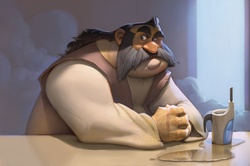
What led you to pursue art full-time?
Going to college. Because I’d gotten a job so young and had been working in the industry for years, I’d never really considered whether I should do something else. But when my wife urged me to go back to school (so my kids would take me seriously when I urged them to do the same), I had to do some hard thinking about whether I should pursue another subject, even just for the sake of a backup job. I found that I was good at a lot of subjects, and with some effort I could have made the jump to something else.
Then I found the animation program at BYU, and I realized that I really did enjoy entertaining people more than the other things I’d been studying. So in the end I picked what I enjoyed the most.
The moral dilemma you go through at times like these is always, “Am I really bringing value to the world?” and of course you always compare your job against teachers, firemen, or some other “morally superior” profession. Entertainment is always going to fall short in those comparisons, especially as a Mormon, where our culture and beliefs place so much emphasis on adding good to the world.
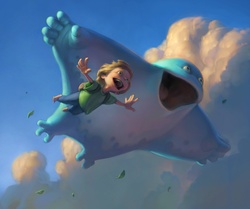
I’ve had to learn to stop worrying about the fact that all I do is give people a world to escape to, even if it’s a family-friendly alternative to what people might be playing instead. I’ve grown to appreciate that what I’m good at makes someone find a moment or two of enjoyment.
At the end of the day, I feed my family and I do it with a job I really enjoy, and if that’s all there is, I can be happy with doing that for the rest of my life.
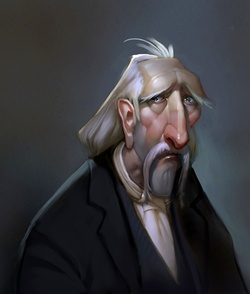
Who have been some of your biggest influences?
My biggest influences have been coworkers and also the diverse subjects I’ve studied in school or through personal research. Surprisingly, there is a lot to learn about art and design from other disciplines. I’m interested in many different things—geology, astronomy, light and physics, architecture—and I feel like all those interests enhance my art and design both directly and indirectly.
Blogs have also been a great thing for artists like me, because now I can follow a plethora of great artists very easily and study what they do well.
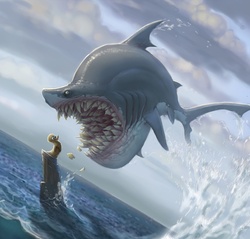
The greatest influences in my philosophy of art and design are Ryan Woodward, Todd Harris, and Mark Kennedy. Ryan’s character design class at BYU opened my eyes to some things I’d never considered before, and that started me down the path of concept art. Mark Kennedy is a Disney artist who runs a blog where he talks about art principles, and these mixed together with some of Todd’s ideas give me a very principle-based viewpoint on art and design.
What do you think are the most important qualities student artists need? What qualities have led your students to succeed?
I haven’t been teaching art for that long, but I suspect the qualities students most need are similar to the qualities I see in even the best professional artists: a combination of resilience and humility. I’ve seen talented and persistent artists who get caught up in their own greatness and stop growing, and that persistence turns into stubbornness. Even when they work hard to learn, they can’t, because without that openness there’s no room for the new learning.
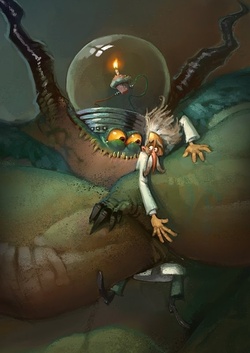
I’ve also seen very humble artists who stop growing because they give up entirely or stop believing they’re capable of what they’re trying to learn.
Somewhere in between there’s a magic combination of the two attributes, where artists are constantly aware of their weakness but won’t let failure get in the way of their attempts to reach their potential.
What do you hope your audience experiences when they see your art?
Mostly, I like to make people laugh or smile, but at the very least I want people to enjoy the picture and feel some sense of familiarity with the character or scene.
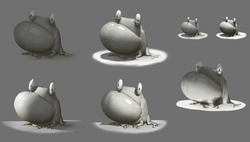
How has Mormonism affected your career decisions?
For one thing, I don’t think I would have had a decision if I hadn’t gone on a mission. Before my mission I wasn’t especially skilled, and I wouldn’t be surprised if I didn’t make it in the industry as an artist because I had such a terrible work ethic.
After my mission, I was focused and driven, and within a few months of getting home, my skills passed the point where think I would have progressed if I had stayed home and worked as an artist the whole time instead.
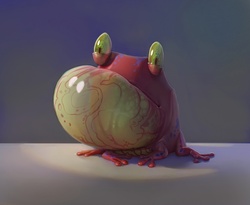
Whether it was a change in drive, work ethic, or just a blessing from God for the sacrifices I made, I’m glad I went. I’ve also had various leadership and teaching roles at times in my work where I’ve drawn upon things I’ve learned in church service over the years.
What career advice would you give college students in the arts?
If you now have or will someday have a family, make them a first priority, even if it means sacrificing some of your opportunities and development. I find myself always wanting to spend more time with my work and developing my skills, but I’ve learned to accept that dissatisfaction as a fact of life. I have four kids, so I seldom work on my own projects at home anymore. I do miss it.
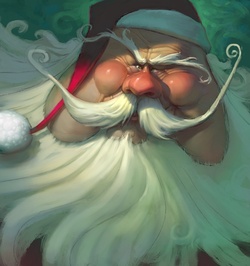
I avoid working overtime whenever possible, and it may be that it gives my managers a worse opinion of my value. I accept that.
Because of this, I attempt to make the time where I’m at work much more effective, and I’ve learned to be very efficient so that I can always get things done on time. I think a lot of my ability to work fast has actually come because of the constraints on my time that I’ve set for myself (and maybe I’ve been blessed for trying to make my family a priority).
In spite of all that, I don’t regret any of the time I’ve given up for my family (although I occasionally regret squandering some of the time I’ve carefully carved out for my family by playing Angry Birds on my iPhone instead).
I’ve learned through hard experience that I’d be fine without my art, but I wouldn’t be fine without my family. ❧
